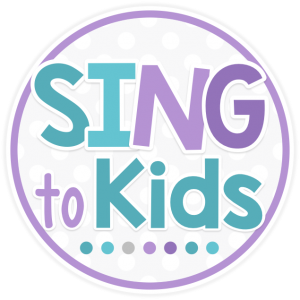I just completed my first week of school. I am probably in the minority, but I don’t love the start of a new school year. It’s A LOT of work. I don’t teach much music the first few weeks. I spend most of my time teaching procedures, behaviors, and expectations because I’ve learned over many years that if I really give time to this at the start of the year, then the rest of my year goes smoothly. Of all my classes, Kindergarten is my favorite to teach. Yes, it’s a bit like herding cats, but they’re so much fun too! Let’s talk about how you can learn to love working with 5 year olds too!
Don’t Try to Do It All on the First Day
For many, your first day of music with kindergarten students is also their first day of school. Elementary school can be overwhelming to our little ones – especially those first few days. Instead of jumping into music making, start with the basics: get to know student names, assign seats, learn how to sit in music, how to raise your hand to ask a question, how to find the bathroom, etc. These seem like such simple things, but they are important to establish relationships and routines in the music room. The singing, chanting, moving, and playing will all come in good time. On day one, work on the small, but important things!
Yes, You Need a Seating Chart
As soon as I’ve gone through my class list, we create a seating chart. Do you need one? Yes. A seating chart gives students a home base and helps me to learn names faster. Each child has a specific place to sit around my circle and I always use a boy/girl pattern around the circle when possible. If I have more girls than boys, then I do two girls next to one another in a few places. Once my students are assigned a place, we identify “landmarks” in the room to help them to know where their seat is. Do they sit near a piano? A drum? The white board? If it’s a sit spot, what color? What number? Then we identify who we sit next to and greet them.
Once we’ve identified landmarks and friends we sit next to, we practice moving away and to our seats. I use a meditation bowl for this. As the bowl rings, the students start by taking three steps away from their seats. When the bowl stops ringing, they stop, and take three steps back. I check to make sure everyone is back in their seat. Then we do it again, taking five/seven/nine steps away from their seats. Each time I check to make sure they’ve come back to their seats and give them LOTS of praise for doing so safely and quickly. By the time we’ve practiced several times, they’ve learned how to identify their seat by landmarks and friends easily.
Teach Every Expectation & Procedure Explicitly
Once my students are back in their seats, I teach them how to sit in music class. In my room, students sit legs crossed and hands in their lap. I demonstrate it for them, then invite them to show me how they sit the same way. If a child doesn’t follow, I ask them to “make a match.” Then I uncross my legs and put my hands behind my back. I share with my students why I don’t want them to sit that way (someone tripping over legs or hands) and that I ask them to sit legs crossed to keep them safe. Then I invite them to show me an incorrect way to sit. This always get the kids giggling a bit because no one ever asks you to do the wrong thing on purpose! Once they show me their silly way to sit, I ask them to show me the correct way again. We do this 1-2 more times so that we’ve explored all the silly, unsafe ways to sit (we know what something is by knowing what it is not) and end with sitting correctly again. I’ve learned that in every thing I expect children to do in my room, I must model it explicitly if I expect them to do it correctly. From move & freeze dances, to getting pencils and papers – model exactly what they should do before they do it.
Sing For Children, Not With Children
When you do begin to sing in class, set the expectation that you sing for children, not with children. On day one, I teach my Kindergarten students the word audiate (definition: to think and comprehend music). I use Music Learning Theory (MLT) as the foundation of my learning, so setting the stage for audiation lays a foundation for the rest of our time together in elementary music. Teaching children to listen and not sing with you can be challenging. I recommend giving your students an explicit job. I say, “My job is to sing, your job is to listen.” If a child chooses to sing with me, then I stop, calmly repeat my directions, and begin again. I do have kids who persist 2-3 times, but soon enough they learn that we will not move on until they follow directions. This is an important lesson too – my word is my word, and I am consistent and calm with my expectations. The sooner your students understand this, the less interruptions to instruction you will have.
End With a Transitional Activity
Forty+ minutes of music is a lot for little ones (I’m going to talk about planning Kindergarten lessons in a Part 2 post). I always end class with a transitional activity to prepare them to go back to their room. My transitional activity is almost always a song-story (song-tale). I invite students to come up around my chair, and I sing a story to them! John Feierabend has a great collection of song tales that can be purchased on Amazon or directly through GIA Publications. Barefoot Books is another great collection that also happens to be on YouTube as well. You can find a list of some of my favorite song tales here. Reading a story is a nice signal that music class is coming to a close, and that we will line up to leave afterwards.
I’ll be talking about how I plan my Kindergarten lessons in my next post. In the meantime, you might enjoy these posts about Kindergarten music:






Connect with me!